
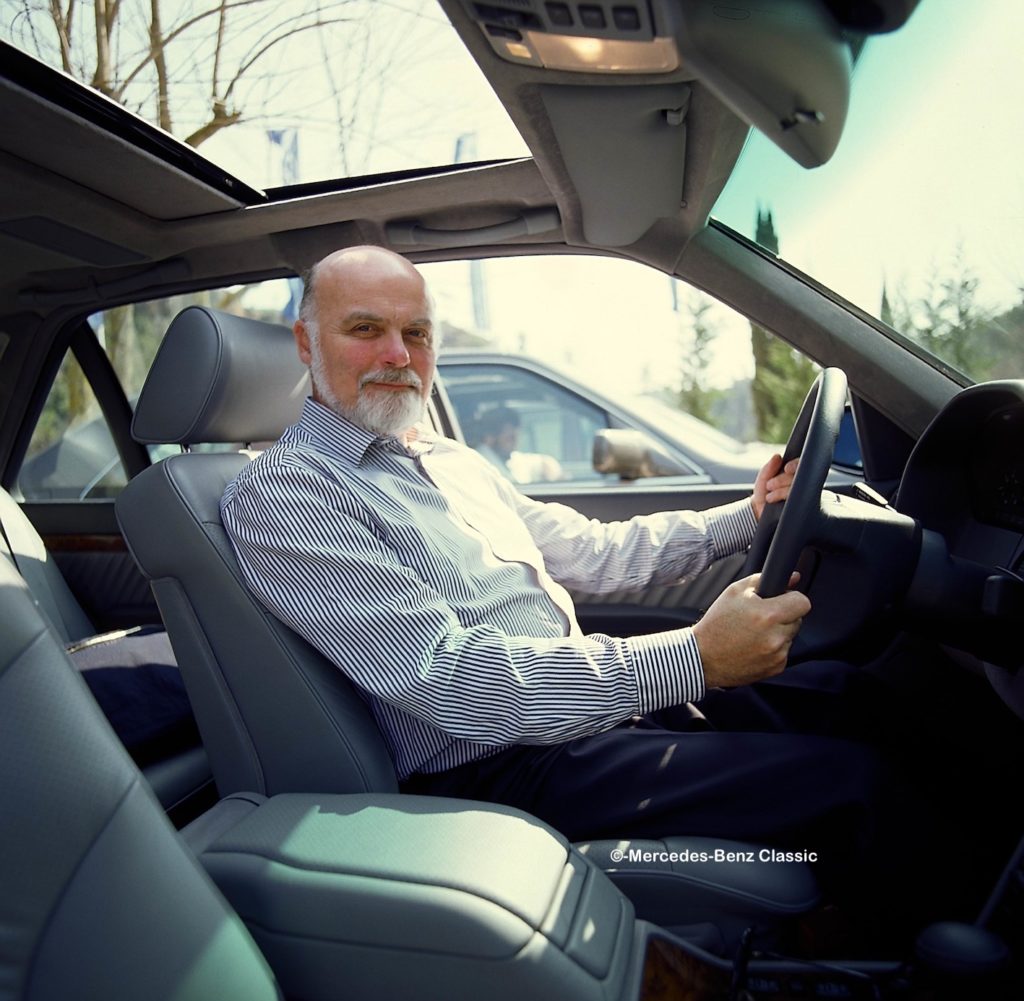
Bruno Sacco’s impact on the design of Mercedes cars from the 1960s to the 1990s was greater than that of anyone else. Bruno Sacco joined Mercedes in 1958 and did not leave until March 1999, a total of 41 years of service in the design department.
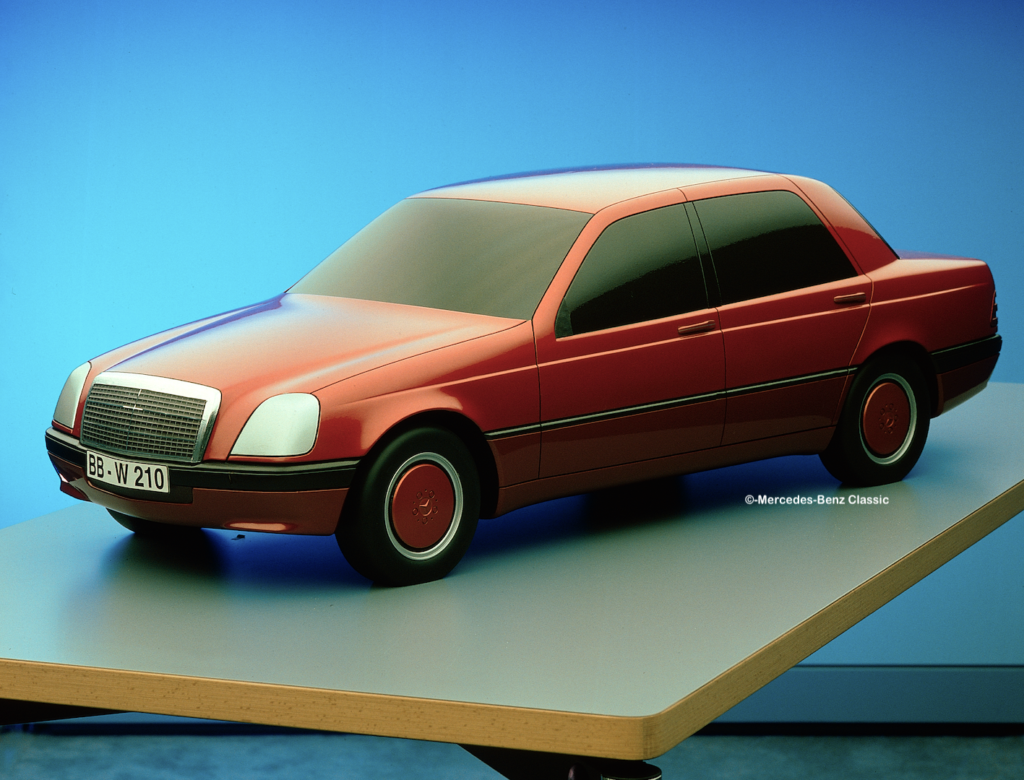
At the German manufacturer, this position is a very long-term contract: Friedrich Geiger was there from 1955 to 1974, Bruno Sacco until 1999 and Gorden Wagener since 2008. Only Peter Pfeiffer limited his tenure to just nine years, from 2000 to 2008. So there have only been four Mercedes design bosses in over 60 years!
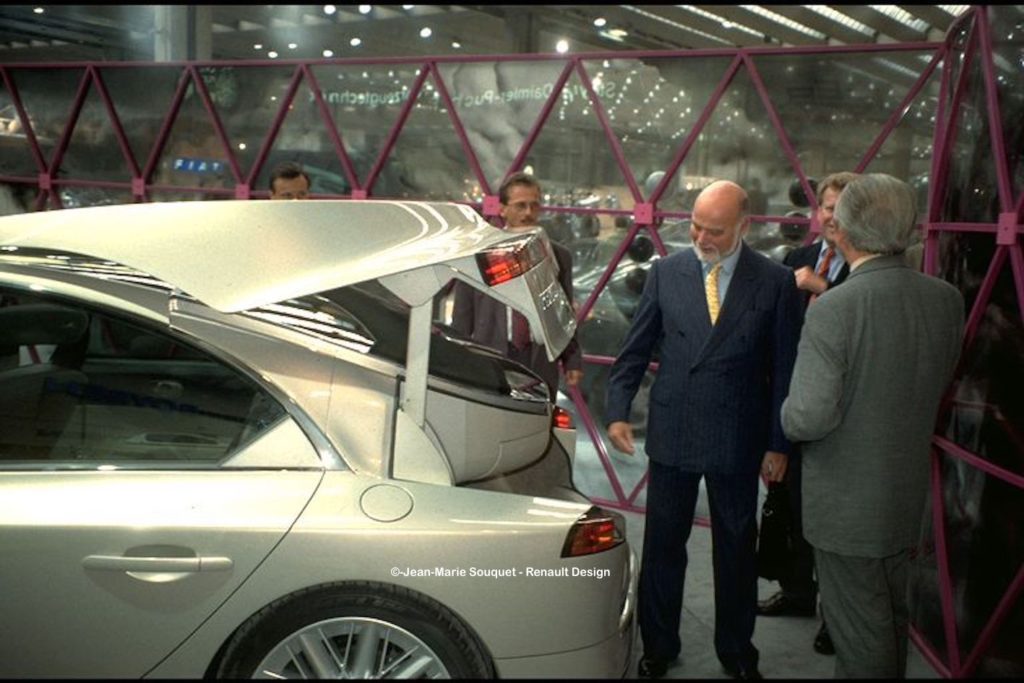
And it was a Frenchman who came close to taking up this prestigious post at the end of the 1990s, when Mercedes was considering Bruno Sacco as its successor. And that Frenchman is Patrick le Quément (above), as he tells us: “Bruno Sacco came with his entire management team in 1995 to the stand where our Initiale concept car was on display, so that I could present it to them. Later, I was asked to replace him when he retired. The designer Olivier Boulay later spoke in an interview about how Initiale was the starting point for the Maybach! But Le Quément remained loyal to Renault.
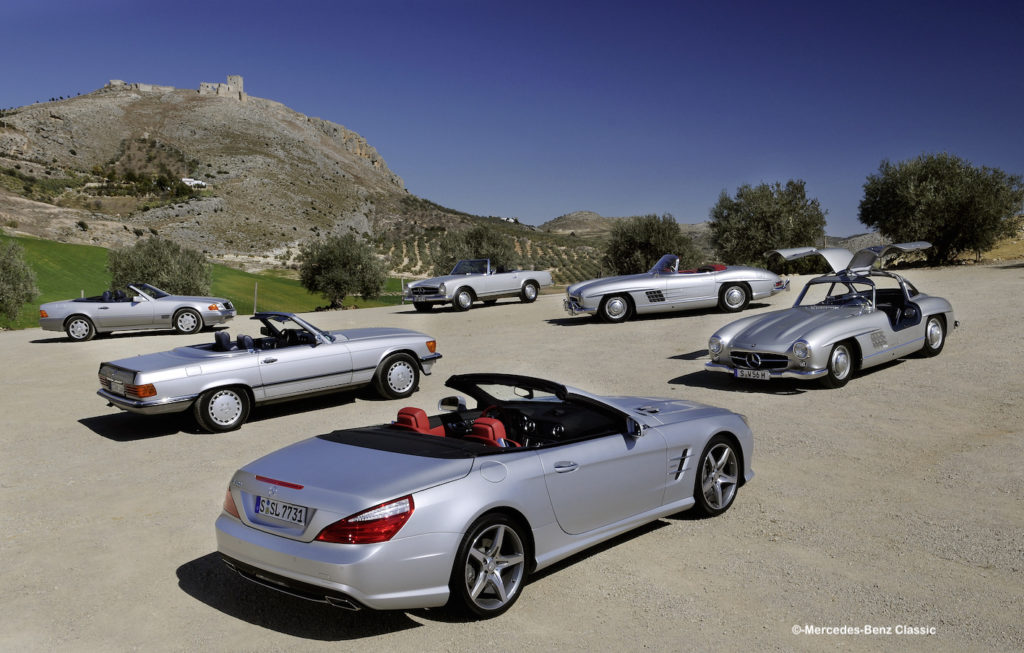
To remain at the head of design for so long, while at the same time developing the image and design of Mercedes, Bruno Sacco developed a design philosophy in the early 1970s. At the time, he spoke of ‘vertical affinity’. This central pillar ensures that a replaced model does not seem outdated by its successor. The aim of this strategy is to maintain the positive aura of a Mercedes on the road for as long as possible. The second pillar concerns brand identity. This involves retaining traditional design features, developing them further and integrating them into the entire range.
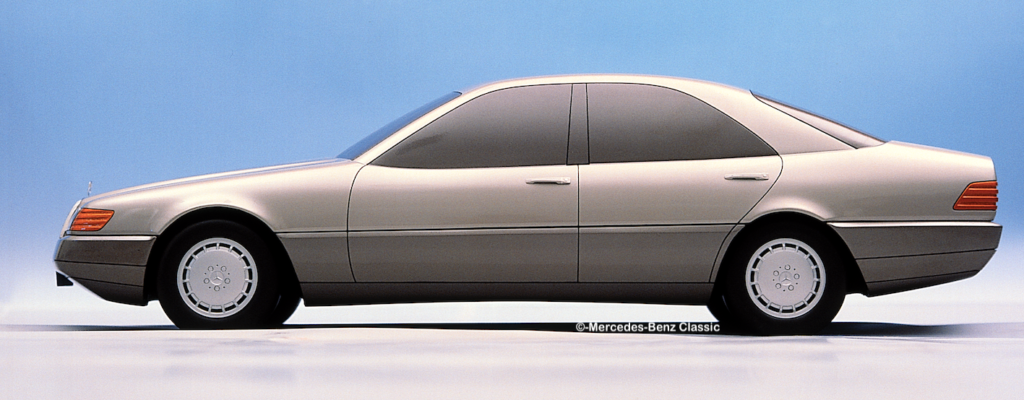
Bruno Sacco refers to this as ‘horizontal homogeneity’. This design avoids ephemeral fashions and, to ensure that it remains sustainable, strategic foresight becomes a key asset. For all that, Sacco has broken certain Mercedes identity codes on several occasions (radiator grille, headlamps, simplicity of the sides, etc.), explaining that innovative technology ‘only becomes visible when it is combined with an equally innovative design’.
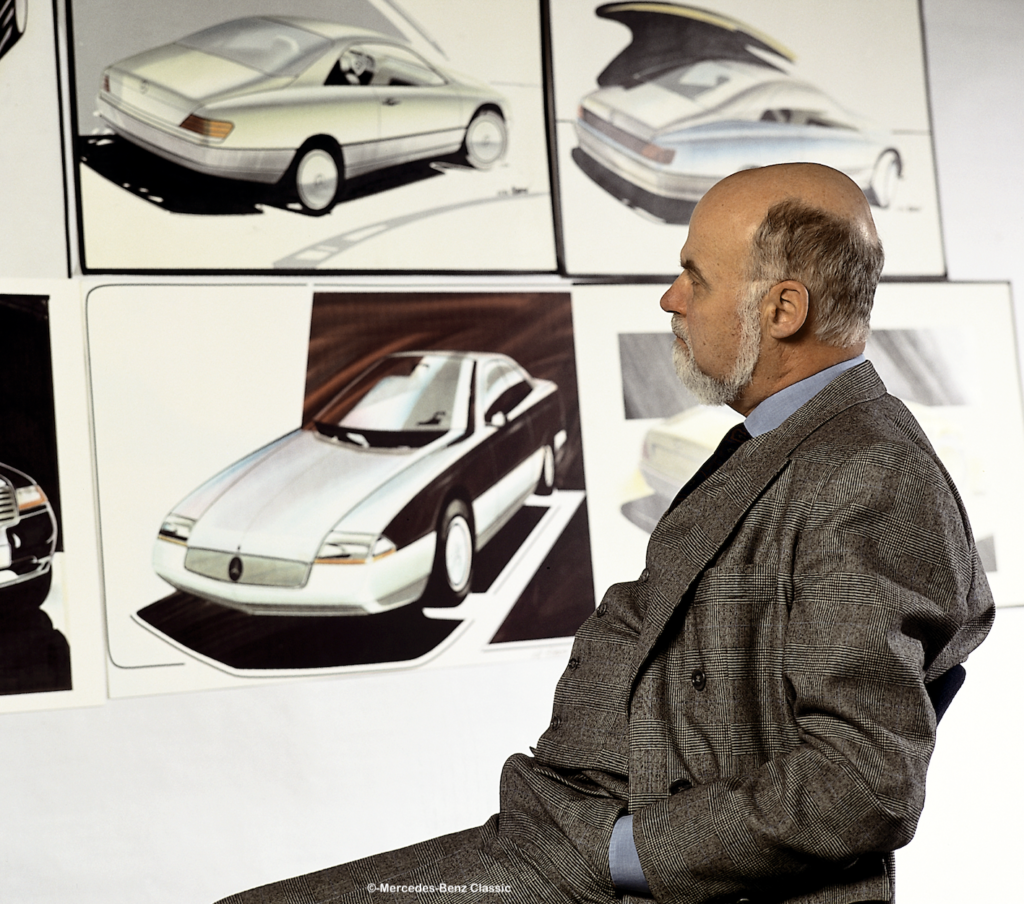
In March 1993, when Bruno Sacco became a member of the Board of Directors, the Mercedes stand at the Geneva Motor Show did not focus on a new model packed with technological innovations, but for the first time on a concept car. The CLK coupé, with its four oval headlamps, is a radical departure from the fundamentals of Mercedes design. The E-Class saloon (W210), the best-seller in the range, adopted this new face in 1995. The end of the decade was an important one for Sacco.

In 1996, he took an incredible gamble just three years before retiring, and put into practice his theory that only the combination of bold innovation and faithful design could result in a cutting-edge product with the arrival of the A-Class (W 168) below. While the 1990s still bear the Sacco hallmark, the previous decade was no slouch when it came to innovation.
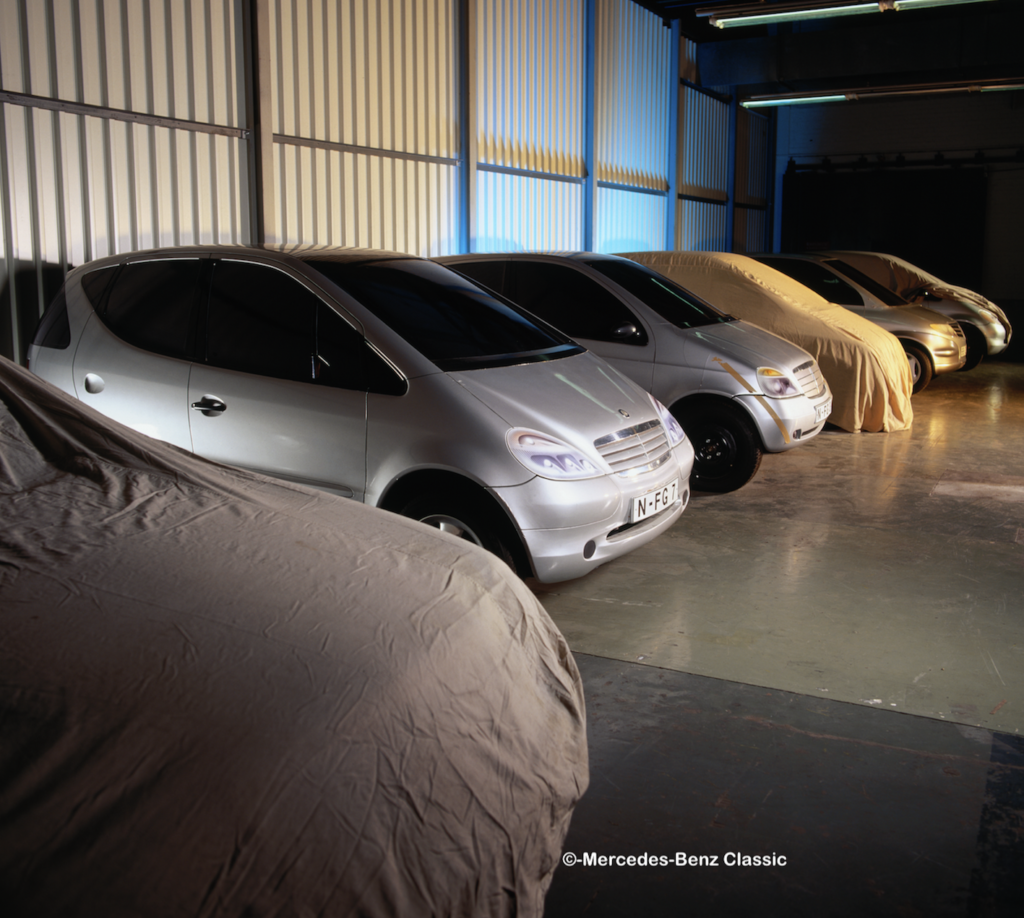
The ‘little’ Mercedes 190 of 1982 responded to new styling challenges that Bruno Sacco and his teams successfully met. At that time, styling was not geared towards luxury segment status, but rather towards functional features. This decade of the 1980s was also marked by the presentation, in 1989, of the new generation SL R129 Series below.
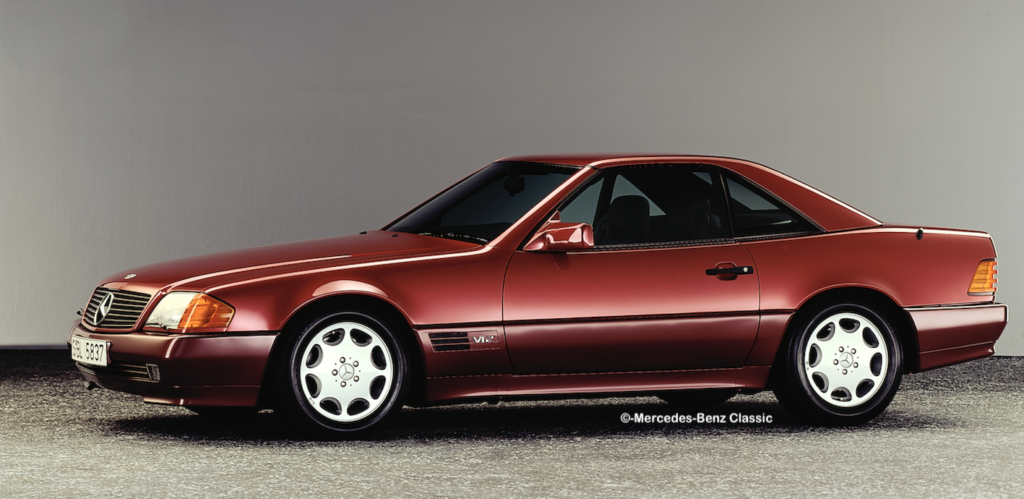
No doubt he was justifiably proud to present it, remembering that when, at the age of 24, he pushed open the doors of the Untertürkheim design office, he was working under the supervision of Karl Wilfert, Friedrich Geiger and Béla Barényi, working alongside them on the Mercedes 600 (below) but also, and above all, on the 230 SL roadster.
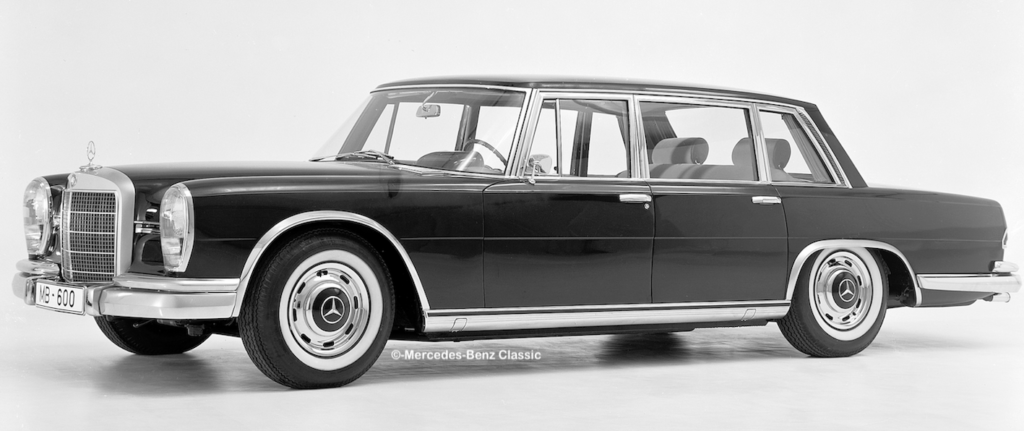
He later recalled that he was ‘totally fascinated by the way the project had been conceived with such care and artistry’. The man was not only interested in style. He worked on the C 111-I and C 111-II experimental vehicles, as well as on ESF (Experimental Safety Vehicle) prototypes, including the ESF 22 below.
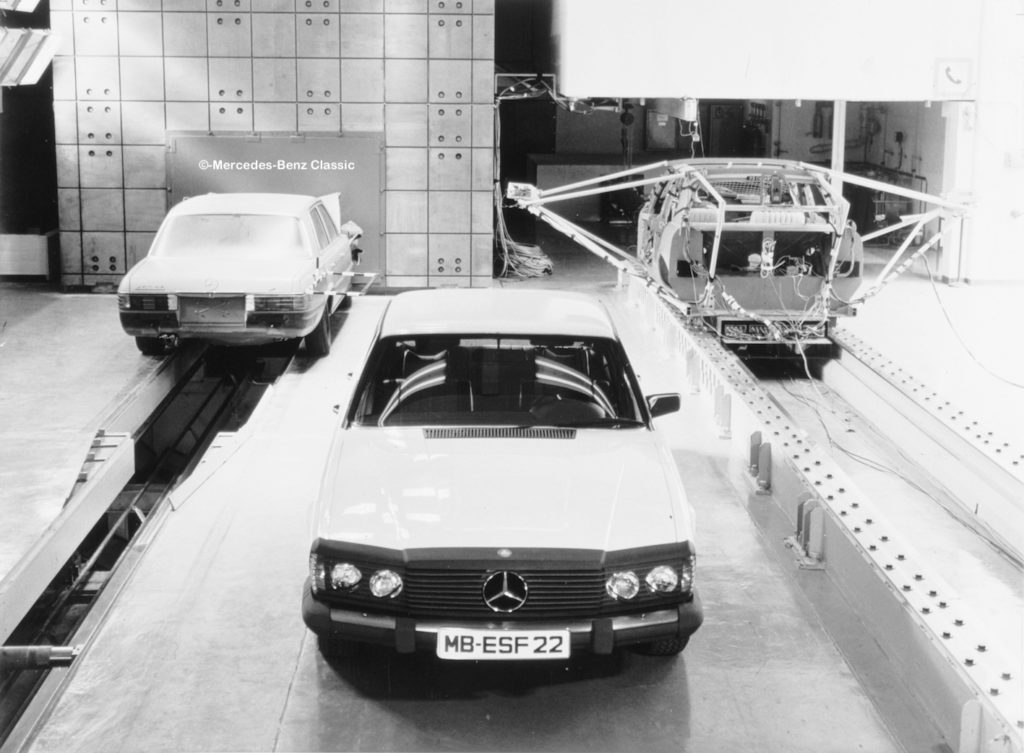
On his arrival at Mercedes, the manufacturer had just presented the W111 saloon (1959) with rear wings, as Ghia had done with its pioneering ‘Gilda’ study at the Turin Motor Show in 1955. Ghia, where he started out just before joining the German manufacturer. Bruno Sacco would later illuminate this range with the 250 C coupé silhouette of the W114 series (1968-1973) below.
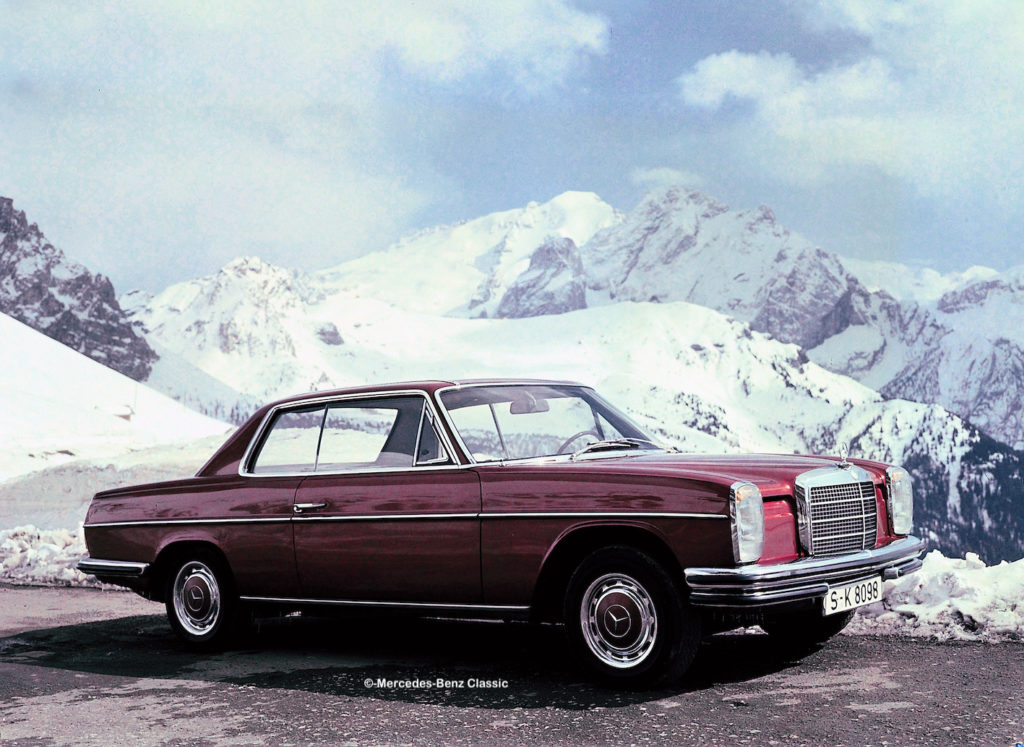
Bruno Sacco, born in Udine, Italy, on 12 November 1933, left his mark on every decade of Mercedes styling history from 1960 to 1999. For a long time, he worked on the basis of a new product development period of four to six years, plus an average production period of eight years and a lifespan of around 20 years.
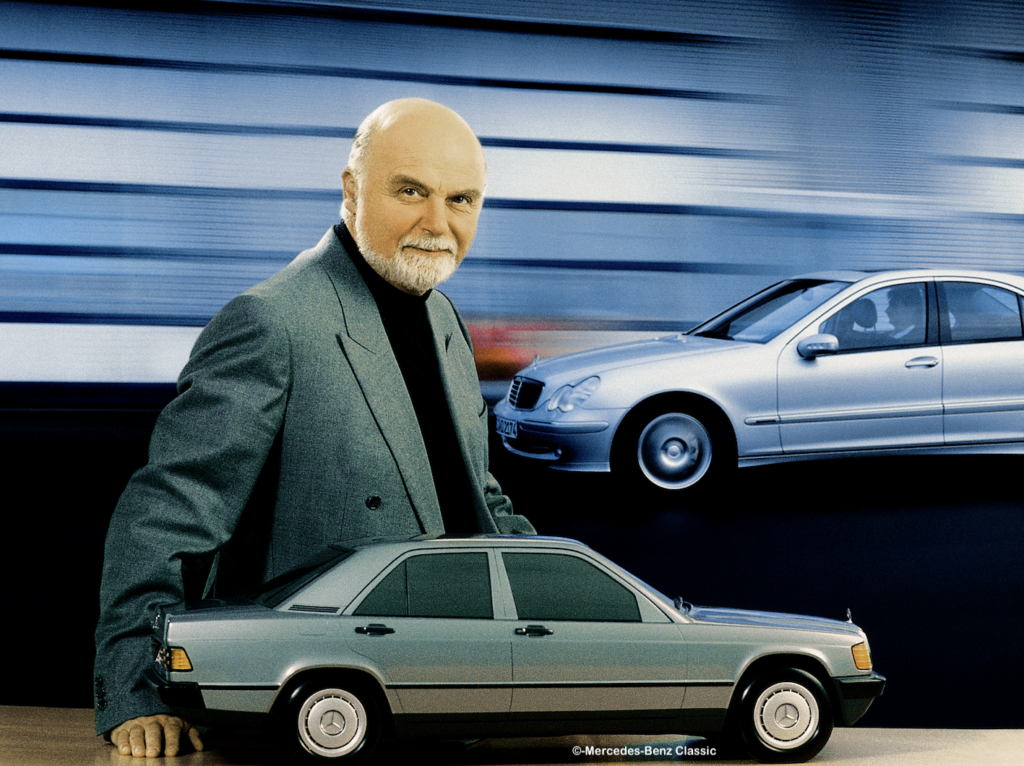
Sacco understood right from the start that a Mercedes not only had to remain modern for 30 years, but also remain timeless. This led him to say that ‘a Mercedes will always look like a Mercedes’. Bruno Sacco died on 19 September in Germany.

LIGNES/auto thanks the Mercedes-Benz Classic department

